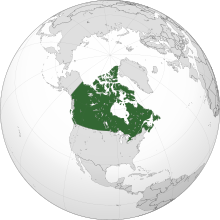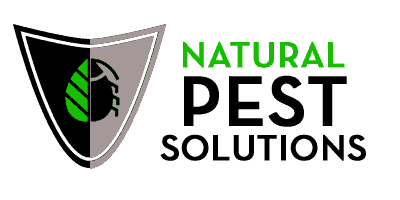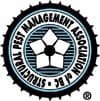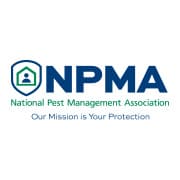Canada
| Canada | |
|---|---|
 | |
| Capital | Ottawa 45°24′N 75°40′W |
| Largest city | Toronto |
| Official languages | |
| Ethnic groups | |
| Religion | |
| Demonym | Canadian |
| Government | Federal parliamentary constitutional monarchy[4] |
| • Monarch | Elizabeth II |
| Julie Payette | |
| Justin Trudeau | |
| Richard Wagner | |
| Legislature | Parliament |
| Senate | |
| House of Commons | |
| Independence from the United Kingdom | |
| July 1, 1867 | |
| December 11, 1931 | |
| April 17, 1982 | |
| Area | |
| • Total area | 9,984,670 km2(3,855,100 sq mi) (2nd) |
| • Water (%) | 8.92 |
| • Total land area | 9,093,507 km2(3,511,023 sq mi) |
| Population | |
| • 2016 census | 35,151,728[5] (38th) |
| • Density | 3.92/km2 (10.2/sq mi) (228th) |
| GDP (PPP) | 2016 estimate |
| • Total | $1.672 trillion[6] (15th) |
| • Per capita | $46,199[6] (20th) |
| GDP (nominal) | 2016 estimate |
| • Total | $1.529 trillion[7] (10th) |
| • Per capita | $40,409[6] (15th) |
| Gini (2012) | 31.6[8] medium · 20th[9] |
| HDI (2015) | very high · 10th |
| Currency | Canadian dollar ($) (CAD) |
| Time zone | (UTC−3.5 to −8) |
| • Summer (DST) | (UTC−2.5 to −7) |
| Date format | yyyy-mm-dd (AD)[11] |
| Drives on the | right |
| Calling code | +1 |
| ISO 3166 code | CA |
| Internet TLD | .ca |
Canada (/ˈkænədə/ (![]() listen); French: [kanadɑ]) is a country located in the northern part of North America. Its ten provinces and three territories extend from the Atlantic to the Pacific and northward into the Arctic Ocean, covering 9.98 million square kilometres (3.85 million square miles), making it the world’s second-largest country by total area. Canada’s southern border with the United States is the world’s longest bi-national land border. The majority of the country has a cold or severely cold winter climate, but southern areas are warm in summer. Canada is sparsely populated, the majority of its land territory being dominated by forest and tundra and the Rocky Mountains. It is highly urbanized with 82 percent of the 35.15 million people concentrated in large and medium-sized cities, many near the southern border. Its capital is Ottawa, and its three largest metropolitan areas are Toronto, Montreal, and Vancouver.
listen); French: [kanadɑ]) is a country located in the northern part of North America. Its ten provinces and three territories extend from the Atlantic to the Pacific and northward into the Arctic Ocean, covering 9.98 million square kilometres (3.85 million square miles), making it the world’s second-largest country by total area. Canada’s southern border with the United States is the world’s longest bi-national land border. The majority of the country has a cold or severely cold winter climate, but southern areas are warm in summer. Canada is sparsely populated, the majority of its land territory being dominated by forest and tundra and the Rocky Mountains. It is highly urbanized with 82 percent of the 35.15 million people concentrated in large and medium-sized cities, many near the southern border. Its capital is Ottawa, and its three largest metropolitan areas are Toronto, Montreal, and Vancouver.
Various indigenous peoples have inhabited what is now Canada for thousands of years prior to European colonization. Beginning in the 16th century, the British and French established colonies, the first being the colony of Canadaestablished by France in 1535. As a consequence of various armed conflicts, British North America gained and lost territory until, by the late 18th century, it controlled most of what comprises Canada today. On July 1, 1867, the colonies of Canada, New Brunswick, and Nova Scotia were federated to form the semi-autonomous federal Dominion named Canada. This began an accretion of provinces and territories to the Dominion to the present ten provinces and three territories forming contemporary Canada. Canada achieved independence gradually beginning with responsible government in the 1830s and culminating with the patriation of the Constitution in 1982. In 1931, Canada achieved near-total independence from the United Kingdom with the Statute of Westminster 1931, except for the power to amend its constitution.
Canada is a federalparliamentary democracy and a constitutional monarchy, with Queen Elizabeth II being the head of state. The country is officially bilingual at the federal level. It is one of the world’s most ethnically diverse and multiculturalnations, the product of large-scale immigration from many other countries. Its advanced economy is the tenth-largest in the world, relying chiefly upon its abundant natural resources and well-developed international trade networks. Canada’s long and complex relationship with the United States has had a significant impact on its economy and culture.
Canada is a developed country and has the fifteenth-highest nominal per capita income globally as well as the tenth-highest ranking in the Human Development Index. It ranks among the highest in international measurements of government transparency, civil liberties, quality of life, economic freedom, and education. Canada is a realm within the Commonwealth of Nations, a member of the Francophonie, and part of several major international and intergovernmental institutions or groupings including the United Nations, the North Atlantic Treaty Organization, the G7(formerly G8), the Group of Ten, the G20, the North American Free Trade Agreement and the Asia-Pacific Economic Cooperation forum.
Geography and climate
Canada occupies much of the continent of North America, sharing land borders with the contiguous United States to the south, and the US state of Alaska to the northwest. Canada stretches from the Atlantic Ocean in the east to the Pacific Ocean in the west; to the north lies the Arctic Ocean.[108]Greenland is to the northeast and to the southeast Canada shares a maritime boundary with the Republic of France‘s Overseas Collectivity of Saint Pierre and Miquelon.[109] By total area (including its waters), Canada is the second-largest country in the world, after Russia. By land area alone, however, Canada ranks fourth, the difference being due to it having the world’s largest proportion of fresh water lakes.[110]
Canada is home to the world’s northernmost settlement, Canadian Forces Station Alert, on the northern tip of Ellesmere Island – latitude 82.5°N – which lies 817 kilometres (508 mi) from the North Pole.[111] Much of the Canadian Arctic is covered by ice and permafrost. Canada has the longest coastline in the world, with a total length of 243,042 kilometres (151,019 mi);[112] additionally, its border with the United States is the world’s longest land border, stretching 8,891 kilometres (5,525 mi).[113]
Since the end of the last glacial period, Canada has consisted of eight distinct forest regions, including extensive boreal forest on the Canadian Shield.[114] Canada has over 2,000,000 lakes (563 greater than 100 km2 (39 sq mi)), more than any other country, containing much of the world’s fresh water.[115][116] There are also fresh-water glaciers in the Canadian Rockies and the Coast Mountains.[117]
Canada is geologically active, having many earthquakes and potentially active volcanoes, notably Mount Meager, Mount Garibaldi, Mount Cayley, and the Mount Edziza volcanic complex.[118] The volcanic eruption of the Tseax Cone in 1775 was among Canada’s worst natural disasters, killing an estimated 2,000 Nisga’a people and destroying their village in the Nass River valley of northern British Columbia.[119] The eruption produced a 22.5-kilometre (14.0 mi) lava flow, and, according to Nisga’a legend, blocked the flow of the Nass River.[120]
Average winter and summer high temperatures across Canada vary from region to region. Winters can be harsh in many parts of the country, particularly in the interior and Prairie provinces, which experience a continental climate, where daily average temperatures are near −15 °C (5 °F), but can drop below −40 °C (−40 °F) with severe wind chills.[121] In noncoastal regions, snow can cover the ground for almost six months of the year, while in parts of the north snow can persist year-round. Coastal British Columbia has a temperate climate, with a mild and rainy winter. On the east and west coasts, average high temperatures are generally in the low 20s °C (70s °F), while between the coasts, the average summer high temperature ranges from 25 to 30 °C (77 to 86 °F), with temperatures in some interior locations occasionally exceeding 40 °C (104 °F).[122]
Canada has a parliamentary system within the context of a constitutional monarchy, the monarchy of Canadabeing the foundation of the executive, legislative, and judicial branches.[123][124][125] The sovereign is Queen Elizabeth II, who is also monarch of 15 other Commonwealth countries and each of Canada’s 10 provinces. As such, the Queen’s representative, the Governor General of Canada (at present Julie Payette), carries out most of the federal royal duties in Canada.[126][127]
The direct participation of the royal and viceroyal figures in areas of governance is limited.[125][128][129] In practice, their use of the executive powers is directed by the Cabinet, a committee of ministers of the Crownresponsible to the elected House of Commons and chosen and headed by the Prime Minister of Canada .
Information source from: https://en.wikipedia.org/wiki/Canada
List Of Best Pest Control Companies In Canadian Cities
Natural Pest Solutions
Suite #1 2160 Wilkinson St.
Kelowna, BC. V1Y-3Z8
phone 778-760-1356
https://mynaturalpestsolutions.com/ca/kelowna-pest-control/
http://naturalpestsolutionskelowna.business.site/
Kelowna youtube Video
https://youtu.be/-N9auvBagJw
Natural Pest Solutions
27-1990 Pacific Way
Kamloops, BC. V1S-1W3
phone 778-765-3337
http://natural-pest-solutions-kamloops.business.site/
Natural Pest Solutions
995 Madeira way NE.
Calgary, AB. T2A-5T4
phone 587-318-0435
http://naturalpestsolutionscalgary.business.site/
Google Map
Natural Pest Solutions
8360 153A Street
Surrey, BC.
V3S 8P9
Phone 604-262-2823
https://mynaturalpestsolutions.com/ca/pest-control-surrey-bc/
https://website-1252491414120316279133-pestcontrolservice.business.site/
Google map
https://goo.gl/maps/jeDVsEt7Z7z
Natural Pest Solutions
46167 Yale Rd,
Chilliwack, BC
V2P 2P2
778-860-5313
MREID https://www.google.com/search?q=Natural+Pest+Solutions+Chilliwack+BC&kponly&kgmid=/g/11fct49vhn
google map
https://goo.gl/maps/dSuP2ELFPvj
Natural Pest Solutions
32450 Simon Ave,
Abbotsford, BC
V2T 5E3
778-771-2459
Google Map
https://goo.gl/maps/MQmtJBzQzVw
Natural Pest Solutions
8771 Lansdowne Rd,
Richmond, BC
V6X 3X7
604-242-1457
GMB Link https://goo.gl/maps/Mrd1JHASLEA2
Natural Pest Solutions
5844 Glover Rd.
Langley, BC. V3A 4H9
604-245-8395
GMB Map https://goo.gl/maps/NAsoCzpbvM82
Orillia On.
Natural Pest Solutions
47 Mississaga St E
Orillia ON
L3V 1V4
Phone: 705-242-4653
MRIED https://www.google.com/search?q=Natural+Pest+Solutions+Orillia+ON&kponly&kgmid=/g/11h6nplyg4
GMB Map https://goo.gl/maps/dwwWhF3BXKD2
Barrie ON.
Natural Pest Solutions
35 Bayfield St
Barrie ON
L4M 3A6
Phone: 705-302-7404
MREID https://www.google.com/search?q=Natural+Pest+Solutions+Barrie+ON&kponly&kgmid=/g/11h6nplyg4
GMB Map https://goo.gl/maps/GKBxPhYQ4aw







